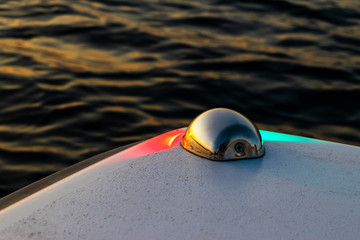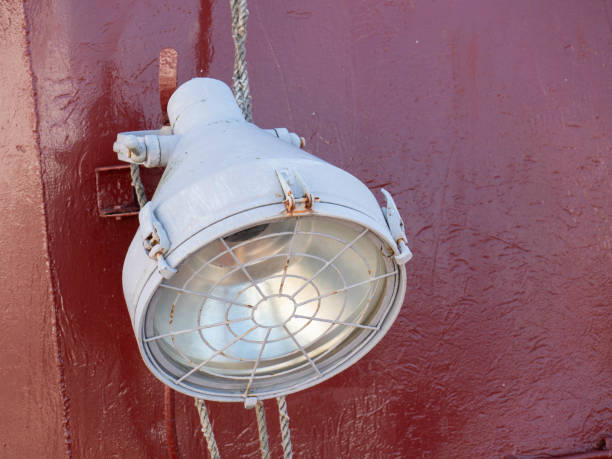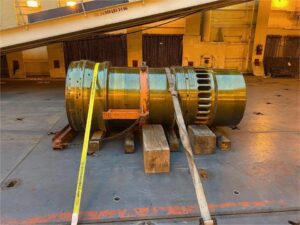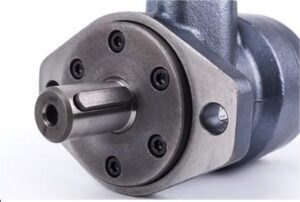Ship lights, a vital component of seafaring, serves as a guiding light amidst the vast expanse of the ocean. It not only ensures safe navigation through treacherous waters but also enhances the enchanting beauty of the marine world. From marine navigation lights to interior boat lights, these luminous companions illuminate the depths, creating a captivating ambiance and illuminating the way for sailors to embark on remarkable journeys across the seas.
Ship lights can be classified into three main categories based on their primary functions and applications. These categories are as follows:
Marine navigation light

Marine navigation lights are a vital component of vessel safety, enabling vessels to communicate their presence, direction, and status to other watercraft. These lights are typically displayed during periods of reduced visibility, such as at night, in fog, or during adverse weather conditions. Here are the key types of navigation ship lights:
- Sidelights (Port and Starboard Lights): Sidelights are displayed on the port (left) and starboard (right) sides of a vessel to indicate its relative direction and course. These lights are typically red and green, respectively, and are visible from dead ahead to 112.5 degrees aft on their respective sides. Sidelights help vessels determine the safe passing distance between each other, with red and green indicating which side to pass.
- Stern Light: The stern light is a white light displayed at the rear (stern) of a vessel. It is visible from dead astern to 67.5 degrees on both sides of the vessel. The stern light helps other vessels determine the vessel’s heading and provides a reference point for safe navigation.
- Masthead Light: The masthead light is a white light displayed at the highest point on a vessel. It is visible from dead ahead to 225 degrees aft. The masthead light serves as the primary forward-facing light, allowing other vessels to determine the vessel’s position, heading, and size.
- All-Round Light: All-round lights emit light in all directions and are used to indicate specific vessel statuses or activities. Common examples include:
- Anchor Light: A white light displayed by a vessel at anchor. It should be visible in all directions and can be placed at the vessel’s highest point.
- Tri-Color Light: Found on sailboats, this single light combines the functions of the red/green side lights and the white stern light. It is used under specific conditions.
- Flashing Yellow Light: This light indicates a vessel engaged in mine clearance operations. It emits a flashing yellow signal to warn other vessels to keep a safe distance.
- Special Lights and Signals: Certain vessels may display additional lights or signals to communicate specific circumstances or activities. Examples include:
- Towing Lights: Yellow lights displayed by vessels engaged in towing operations, indicating their status and the length of the towline.
- Restricted Maneuverability Lights: Vessels with restricted maneuverability, such as those involved in dredging or surveying, display three all-round red lights in a vertical line.
- Pilot Lights: Vessels carrying a pilot to assist with navigation display two white lights in a vertical line.
What's The Rules For Marine Navigation Light On Boat?
The rules for marine navigation lights on boats are mainly governed by the International Regulations for Preventing Collisions at Sea (COLREGs). These regulations provide standardized guidelines for the types, colors, positions, and visibility ranges of navigation ship lights to ensure safe navigation and prevent collisions. Here are some key rules for navigation lights on boats:
- Vessel Types and Sizes: The specific requirements for navigation lights depend on the type and size of the vessel. Different rules apply to power-driven vessels, sailing vessels, fishing vessels, and vessels under 7 meters (23 feet) in length.
- Power-Driven Vessels Underway:
- Sidelights: Power-driven vessels underway must display red and green sidelights. The red light should be displayed on the vessel’s port (left) side, and the green light on the starboard (right) side. These lights should be visible from dead ahead to 112.5 degrees aft on their respective sides.
- Stern Light: Power-driven vessels must also display a white stern light visible from dead astern to 67.5 degrees on both sides of the vessel.
- Sailing Vessels:
- Sidelights: Sailing vessels underway must display red and green sidelights, similar to power-driven vessels. However, when sailing vessels are under both sail and engine power, they should display the same lights as power-driven vessels.
- Stern Light: Sailing vessels may display a white stern light, but it is not mandatory unless they are also using their engines.
- Fishing Vessels:
- Fishing vessels engaged in fishing activities may display additional lights to indicate the nature of their operations. These lights can include a yellow flashing light or two all-round red lights in a vertical line.
- Vessels Under 7 Meters (23 Feet):
- Small vessels, typically under 7 meters, are subject to simplified lighting requirements. They are generally required to display an all-round white light visible from 360 degrees and may also display sidelights.
- Anchor Light:
- Vessels at anchor must display an all-round white light visible from 360 degrees. The anchor light should be placed above the hull and be visible for at least 2 nautical miles.
- Special Circumstances:
- Different lighting rules and signals apply to vessels engaged in specific operations, such as towing, pilotage, dredging, and mine clearance. These rules may include the display of additional lights or signals to indicate the vessel’s status or activities.
Deck Lighting And Marine Interior Lighting

Deck lighting on a boat or ship refers to the illumination of the exterior deck areas, while marine interior lighting pertains to the ship lights inside the vessel’s cabins, compartments, and other enclosed spaces. Here’s a breakdown of each:
- Deck Lighting:
Deck lighting focuses on providing illumination to the exterior deck areas.For example, deck lighting ensures proper illumination for safe deck crane operations during nighttime or low-light conditions It serves various purposes, including enhancing safety, facilitating navigation, and creating a pleasant ambiance. Deck lighting fixtures are typically installed on the deck surface, along walkways, stairs, and other important areas. These lights help improve visibility during nighttime operations, low-light conditions, or adverse weather. Deck lighting can include LED lights, floodlights, spotlights, strip lights, recessed lights, or deck post lights. They are designed to withstand the marine environment, including exposure to saltwater, moisture, and vibrations. - Marine Interior Lighting:
Marine interior lighting pertains to the lighting fixtures installed inside the boat or ship’s cabins, compartments, and enclosed spaces. It serves multiple functions, including providing general illumination, task lighting, accent lighting, and emergency lighting. Marine interior lights are designed to be safe, durable, and efficient, considering the vessel’s specific requirements and regulations. These lights are used in cabins, saloons, galley kitchens, engine rooms, crew quarters, storage areas, and other interior spaces. They can include ceiling lights, wall-mounted lights, reading lights, vanity lights, berth lights, and emergency lighting fixtures.
What Kind Of Light Should I Choose?
For both deck lighting and marine interior lighting, LED (Light Emitting Diode) lights are generally the preferred choice due to their numerous advantages over fluorescent lights. Here’s why:
- Energy Efficiency: Marine LED lighting are highly energy-efficient, consuming significantly less power compared to fluorescent lights. This efficiency is particularly important on a boat or ship where energy conservation is crucial for optimizing battery life or reducing fuel consumption.
- Durability and Lifespan: LED lights are known for their durability and long lifespan. They are resistant to shock, vibration, and frequent on/off cycling, making them more suitable for the marine environment, which can be demanding and subject to constant movement.Marine LED lighting have a longer operational life, reducing the need for frequent replacements and maintenance.
- Compact Size: LEDs are compact in size, allowing for more flexibility in terms of design and installation. They can be easily incorporated into various lighting fixtures and fittings, making them suitable for both deck lighting and marine interior lighting applications where space may be limited.
- Instant On/Off: Marine LED lighting provide instant illumination when switched on, without any warm-up time. This is particularly advantageous for areas where immediate lighting is required, such as emergency situations or navigating dark areas on the deck.
- Environmental Friendliness: LEDs are considered more environmentally friendly compared to fluorescent lights. They do not contain mercury or other hazardous substances, making them easier to dispose of and reducing the potential for environmental pollution.
- Color Options and Dimming: LED lights offer a wide range of color options, allowing for customization and creating various lighting atmospheres. Additionally, LEDs can be easily dimmed, providing control over the intensity of the light to suit different preferences and needs.
While LED lights are generally preferred for marine interior lighting, there are a few advantages of fluorescent lights that may still make them a viable option for certain applications. Here are a few advantages of fluorescent lights for marine interior lighting:
- Cost-effective: Fluorescent lights tend to have a lower upfront cost compared to LED lights. If budget constraints are a significant concern, fluorescent lights may be a more affordable option for marine interior lighting.
- Wide Availability: Fluorescent lights have been widely used for many years and are readily available in various sizes, shapes, and color temperatures. This availability can make it easier to find specific fluorescent lighting fixtures that suit the requirements of marine interior spaces.
- Diffused Light Output: Fluorescent lights produce a more diffused light output compared to LEDs, which can be advantageous in some applications. This characteristic can help create a softer and more evenly distributed illumination in specific areas, such as cabins or saloons.
- Compatibility with Existing Fixtures: If a vessel already has fluorescent lighting fixtures installed, it may be more convenient and cost-effective to continue using fluorescent lights. Retrofitting the entire lighting system with LEDs could require additional modifications and expenses.
Marine Specialized Light
Specialized lighting includes lights designed for specific purposes or applications beyond navigation and general illumination. These lights serve specific functions and may not be present on all vessels. Examples of specialized marine light include:
- Underwater boat Lights: These lights are installed beneath the waterline of the vessel to enhance visibility in the water, create an aesthetic appeal, or attract marine life.
- Searchlights: Searchlights are powerful lights used for long-range illumination. They are often mounted on the vessel’s mast or other high points and can be rotated or tilted to provide directional lighting.
- Emergency Lights: Emergency lights are designed to provide illumination in emergency situations, such as power failures or during evacuation procedures. They are usually battery-powered and come on automatically when the main power source fails.
What's The Best Color For Underwater Boat Lights?
From an objective perspective, the best color for underwater boat lights would be white. Here’s the reason:
- Visibility and Safety: White lights offer excellent visibility in both clear and murky waters. They provide a high degree of contrast and can effectively illuminate the surrounding area, making it easier to navigate, spot obstacles, and ensure the safety of the boat and its occupants.
- Practicality: White lights are practical and versatile for various activities on a boat. They can assist with nighttime navigation, docking, and underwater maintenance tasks by providing clear illumination that mimics natural daylight conditions.
- Minimal Distortion: White lights minimize color distortion underwater, allowing objects and surroundings to appear more natural. This can be particularly important when it comes to accurately judging distances, depths, and potential hazards in the water.
- Regulatory Compliance: In some jurisdictions, there may be regulations or restrictions on the use of certain colors for underwater boat lights. White lights are generally more widely accepted and compliant with regulations, ensuring that you can use them without concerns about legal limitations.
While personal preferences may vary, white lights offer practicality, visibility, and regulatory compliance, making them a solid choice for underwater boat lights from an objective perspective.
GOSEA MRAINE Ship Lights For Marine Operation
GOSEA MARINE is a trusted brand that offers a wide range of high-quality ship lights solutions specifically designed for marine applications. Our products are known for their durability, reliability, and performance in the challenging maritime environment. We supply various marine lights including navigation lights, interior boat lights, underwater lights, deck lights, spotlights, and more. These lights meet international regulations and safety standards, ensuring compliance and optimal visibility on the water. With a focus on innovation and customer satisfaction, GOSEA MARINE ship lights are a preferred choice for boat owners seeking reliable and efficient lighting solutions for their vessels.






